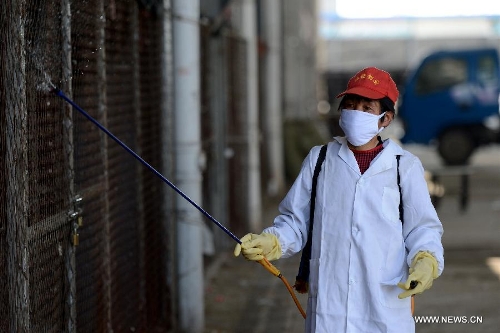Virus shows China's progress and limitations

The rising number of identified human cases of the H7N9 virus in China has put some other countries and regions on alert, though experts believe the chance of a global epidemic is still low. However, international opinion seems to have acknowledged "significant changes" in China's response to disease outbreaks.
Gregory Hartl, a World Health Organization spokesman, praised the Chinese response, including immediate reporting and information volunteering, as "excellent." Since SARS, the public health debacle that occurred one decade ago, China has reformed its epidemic handling system, especially infection reporting and tracking mechanisms. Experts from US health agencies believe the close cooperation with their Chinese counterparts in recent years has helped a lot in terms of China's flu monitoring and lab testing.
This public health reform is due to changes in the mentality of governing bodies. The top leadership has promised transparency in virus reporting. This has been judged by China's observers to be a new way of thinking which is more open and effective in maintaining social stability.
There are concerns among observers as to what extent such attitudes could still be adopted at the local level, especially when the outbreak escalates. Generally speaking, responsive transparency is an irreversible trend among local officials, given top-down regulations and public pressure.
The SARS fiasco was widely seen as a lesson for China. The initial coverup and inaction of Chinese officials in 2003 not only directly led to the spread of SARS, but also marred China's reputation as a responsible and capable country when handling public health emergencies.
The latest flu, if well handled, will serve as a chance for China to practically integrate with international public health communities and fulfill its obligations as a responsible power. It could be a new watershed moment for China, and the effect would certainly go beyond the public health level.
Of course, this is easier said than done. The country's complex conditions are on full display as the disease spreads. China has first-rate labs, but it also has limited healthcare infrastructure, especially in rural areas. Some have pointed out that although theoretically the hospital bills for H7N9 victims should be paid by the government, emergency treatment funds and healthcare support channels are still lacking.
All these pose pragmatic constraints to China's domestic epidemic prevention and control. Clearly, the world is witnessing a cooperative and responsible China fulfilling its promises. But the tasks ahead are much heavier and involve more than just information transparency.